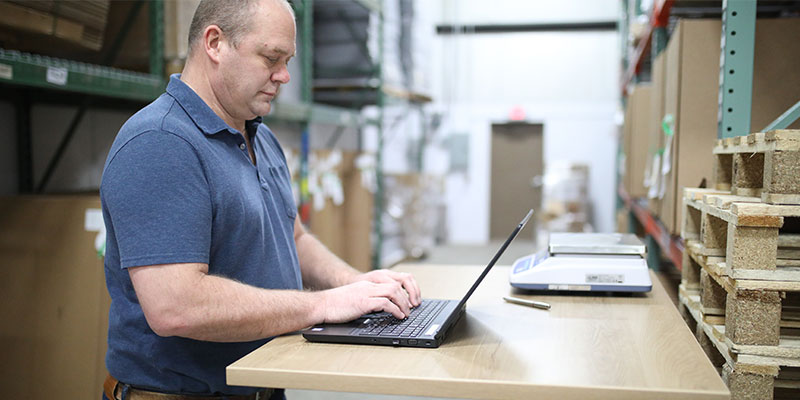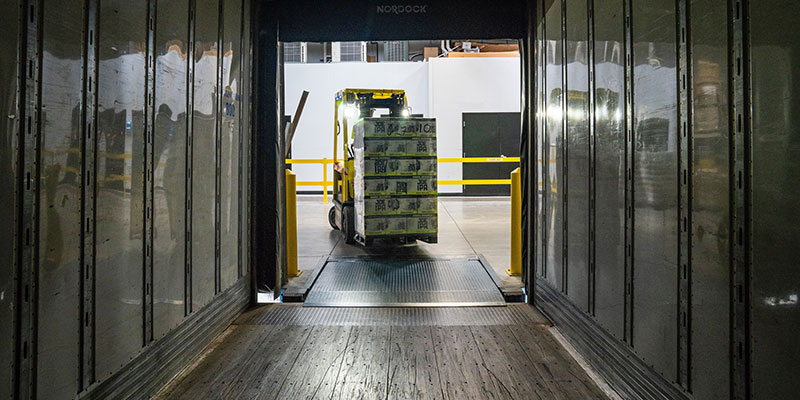How a Modified Just-in-Time Manufacturing Approach Evolved for Supply Chains

Remember the news coverage a while back showing cargo and container ships near the ports? Some of which were at dock loading or unloading and others were anchored off the coast for days on end?
That image would inevitably haunt supply chain managers, but luckily, these conditions have significantly improved since then, but the memories of this remain as a stern reminder of how global politics, financial markets and health can quickly disrupt or even shut down freight operations and trade.
These disruptions are ironic, given that most of us who work in supply sourcing have always pushed to support a just-in-time (JIT) manufacturing and inventory management approach, a system created to solve exactly these supply chain problems.
Is it time to re-evaluate the JIT concept? Let’s take a brief look back at the original model, what system actually emerged over the years and how a modified JIT system can improve supply streams—especially when combined with the available technology of rapid prototyping and on-demand manufacturing.

Just-in-time inventory control ensures that you always have on-hand the right quantity of parts to maintain production, avoiding waste and the cost of massive warehousing.
Just-in-Time Manufacturing: Driven by Toyota
JIT has been around for decades, and its adoption by Toyota and its Toyota Production System (TPS) has been well documented. The carmaker may not have been the first out of the gates this strategy, but it was one of the earliest companies to successfully apply the approach to manufacturing, creating a production system based on the philosophy of achieving the complete elimination of all waste, in pursuit of the most efficient methods.
The main goal of this process was to streamline operations, including supplier activities and reduce inventories. This was achieved by maintaining just enough stock onsite to keep a company’s manufacturing supply chain operating for a predetermined period of time. Then, when the company needed more product, they would order what was needed to top up their stock, to keep their business operating for their following period. The benefit of this was that it shortened the time it took to get parts, reduced the cost of shipping, and lessened the need to 'warehouse' product onsite.
Eventually, however, the promise of dramatically cheaper supplies from overseas sources—led by China’s lower labour costs—steered industry to globalise manufacturing. Companies could order massive quantities of supplies or parts from abroad and then warehouse those goods to ensure they would be available when needed. That seemed to work for a while, but, it did mean that this was no longer a “just-in-time” approach, it was more of a “almost JIT” approach. In addition, as those of us who manage supply chains have experienced, a long list of offshoring costs and challenges then began to surface over the years.

An advantage of JIT is that you can work with local manufacturers to maintain quality control and proximity to where your parts are made, reducing shipping costs, tariffs, and more.
Offshoring’s Costs and Challenges
A prime issue when evaluating offshoring supply chains tends to focus on cost, and, as you may know, there are a lot of costs with offshoring. These include extra inventory and safety-stock costs, international shipping and import costs and unexpected expediting costs, too name just a few.
Beyond cost hurdles, there are still other offshoring challenges to navigate.
Take product development. Design iteration across an ocean can be painfully slow.
Also, consider geopolitical uncertainty. Tariffs, regulations, imposed duties, growing nationalism and isolationism in various countries, social unrest, and governmental upheaval can all profoundly affect suppliers.
Quality and waste are issues, too. Consider this example: A company’s supply chain manager is waiting for their goods to arrive, then, when finally receiving the shipment, something might be missing or broken, or there are different products in the shipment from what was ordered. So, essentially, the manager still doesn’t have the part when it’s needed.
Then there are the unpredictable events, such as political unrest, natural disasters and global health issues.
Or bottom line advice? Take a high-level view, keeping in mind not just the purchased price of a part but the landed cost of that part, which is the sum of all expenses associated with its international shipping.
Along with that view, consider the total cost of ownership, the method for quantifying the costs for every activity along the supply stream, including acquisition, transportation, storage, and selling of goods.
A Modified JIT Strategy Combined with On-Demand Production
More recently, companies have been rethinking international, offshore strategies and turning to a sort of hybrid or modified version of JIT manufacturing and supply management, merging, when possible, regional and global strategies.
This approach has been enabled by advances made by digital manufacturing suppliers like Protolabs, which can provide rapid turnaround for prototype and end-use parts and products and often don’t require minimum order quantities, thereby saving substantial time and warehousing costs.
Ultimately, using global manufacturers and suppliers, when it works, takes advantage of lower labour costs. At the same time, using regional suppliers—when it makes sense—takes advantage of a supply source that’s closer to the point of production and consumption. The result of using the best of both worlds? JIT manufacturing and inventory management gets reinvented and strengthens a company’s overall supply chain.
Continue reading about building supply chain resilience through five actionable solutions.
